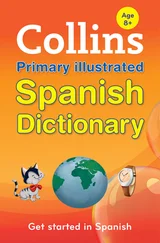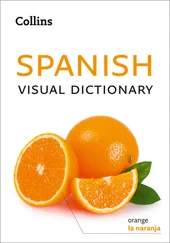| ai |
– e as in set (mais, lait) followed by n: a as in sang (pain, copain) |
| au |
– o as in gosh (gauche) |
| eu |
– euh (peu, deux) |
| eau |
– oh (couteau) |
| ou |
– oo (genou, couscous) |
BON À SAVOIR!
Two words you will often hear – oui( yes ) and lui( him ) are examples of a breathy w sound – they’re pronounced rather like hwee and lwhee .
Most French consonants are pronounced the same as their English equivalents. Some consonants, however, are pronounced differently depending on which vowel follows:
| c |
– k as in keen when it is followed by a, oor u(cadeau, couteau, cumin) – note that when a cedilla (ç)is added to the c,it will sound like s in sit (ça, garçon, déçu)– s as in ceiling when it is followed by e, ior y(séance, citron, cyprès) |
| ch |
– sh as in shop (chemise, mouchoir) |
| g |
– g as in gate when it is followed by a, oor u(gaz, égouter, aigu)– s as in leisure when it is followed by e, ior y(juge, gilet, gym) |
| gn |
– ni as in onion (oignon, campagne) |
| j |
– s as in leisure (jeter, Jules) |
| q, qu |
– k as in keen (chaque, question) |
| s |
– z as in zoo when it is between vowels (heureuse, oiseau)– s as in sit when it isn’t (cassé, sauce, désastre) |
| th |
– t as in take (maths, thermostat, théâtre) |
| t in -tion |
– s as in sit (natation, national) |
Some consonants are pronounced differently to English:
| h |
– when it begins a word, it can be ‘silent’ (l’homme, un hôtel) or ‘aspirate’ (les haricots, le hall). When the his silent, the word behaves as though it starts with a vowel and forms a liaison with the preceding word where appropriate (see below). When the his aspirate, no liaison is made. |
| r |
– rr : a raspy sound in the back of the throat (rue, rouge, rare) |
| ll |
– y as in yes (fille, paille) |
BON À SAVOIR!
Note, however, that mille( one thousand ) is pronounced to rhyme with peel .
In English words, a particular syllable is stressed ( con cert, den tist), whereas in French each syllable has its own length and each is pronounced with the same intensity.
Liaison is what happens when a French word ending in a consonant which would usually be silent, for example, petit( small ), les( the ), precedes a word starting with a vowel or a ‘silent’ h.The silent consonant is sounded to make the words flow more easily.
petit ami( boyfriend ) is pronounced puh-teet-ah-mee (the tat the end of petitis sounded)
les hôtels( hotels ) is pronounced layz-oh-tel (the sat the end of lessounds like a z )
Small talk
Comment ça va? – How are things?
Whether you’re going to be working in a French-speaking country or you’re going to spend some time with your French-speaking friends, you’ll want to be able to chat with people and get to know them better. The phrases in this unit will help you talk naturally to friends, family and colleagues in a number of everyday situations.
Just as in English, there are several ways of greeting people in French, depending on who you are addressing, and whether you want to be formal or not. Say bonjour, madame/mademoiselle/monsieurif you want to sound polite and just bonjourto someone you know a little. If you’re on friendly terms with someone, you can say salut!( hi! ).
| Bonjour. |
Hello. |
| Bonjour,madame. |
Good morning. |
| Bonjour,Pierre. |
Good afternoonPierre. |
| Salut,Olivier! |
HiOlivier! |
| Bonsoir. |
Good evening. |
BON À SAVOIR!
In French there is no equivalent for good morning and good afternoon – people just say bonjourduring the day or bonsoirin the evening.
Use au revoir, madame/mademoiselle/monsieurto say goodbye to people you don’t know well. You can just say au revoirto people you know, or use salut!( bye! ) if you are on friendly terms with them.
| Au revoir,monsieur. |
Goodbye. |
| Au revoir,mademoiselle. |
Goodbye. |
| Salut! |
Bye! |
| Bonsoir. |
Goodnight. |
| Àplus tard! |
See youlater! |
| Àdemain! |
See youtomorrow! |
| Àlundi! |
See youon Monday! |
You may want to introduce people you know to one another. The simplest way is by saying voici( this is ) when introducing a person. You can also use je te présente( I’d like you to meet ) when addressing someone you know well, or je vous présenteto be more formal or when speaking to several people.
| Voicimon mari, Richard. |
This ismy husband, Richard. |
| Voicimes enfants: Andrew, Gordon et Emma. |
These aremy children, Andrew, Gordon and Emma. |
| Je vous présenteDanielle. |
I’d like you to meetDanielle. |
| Je te présenteKevin, mon compagnon. |
I’d like you to meetKevin, my partner. |
BON À SAVOIR!
When you’re introduced to someone, you’ll want to know how to react. The traditional enchantéshould only be used in formal or business situations these days, and very often people just say bonjour.
Читать дальше












